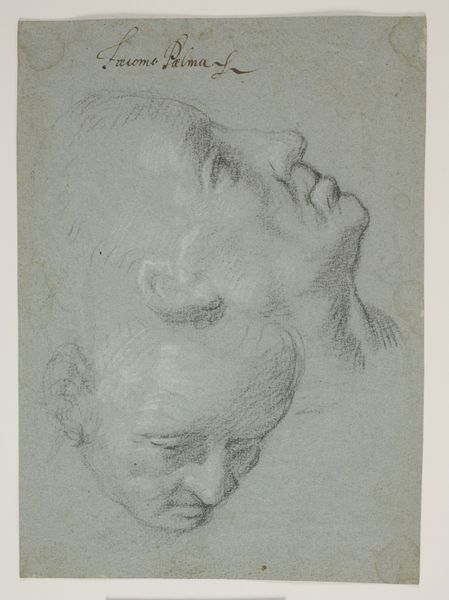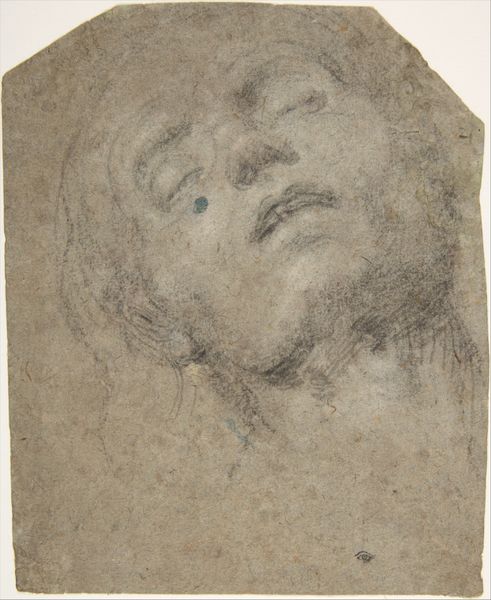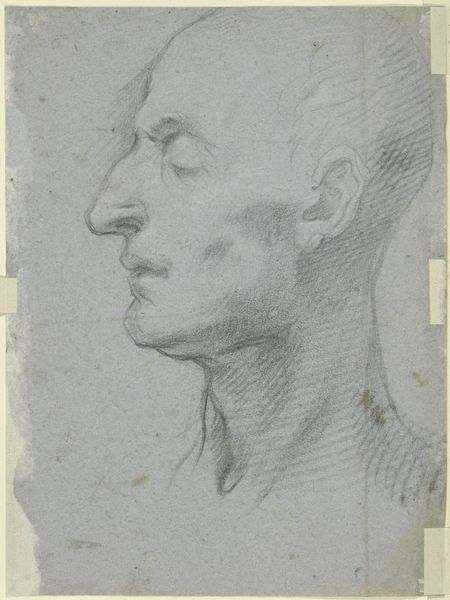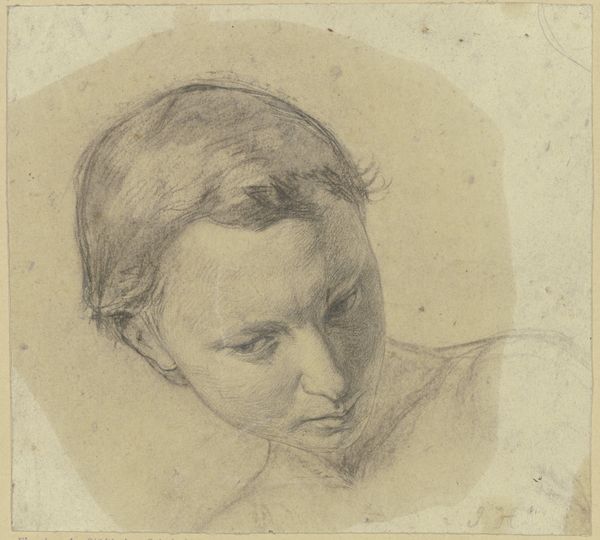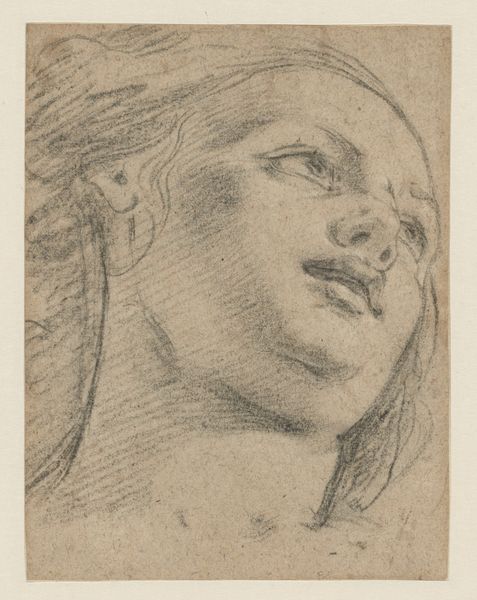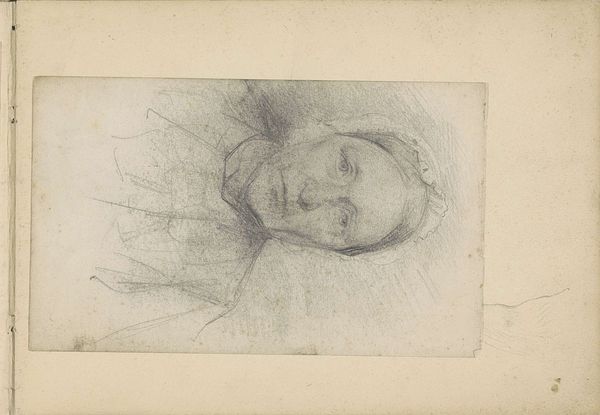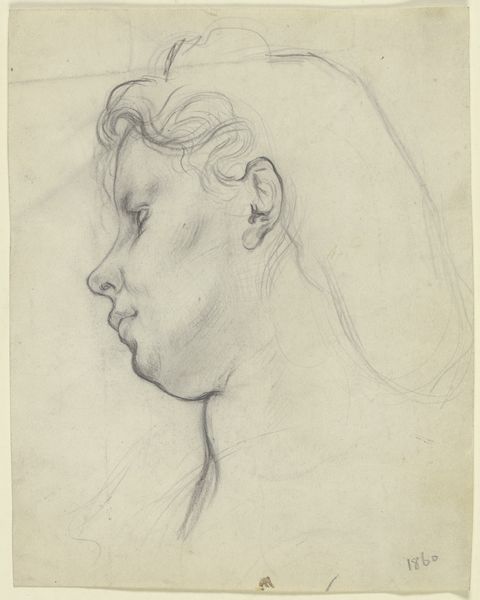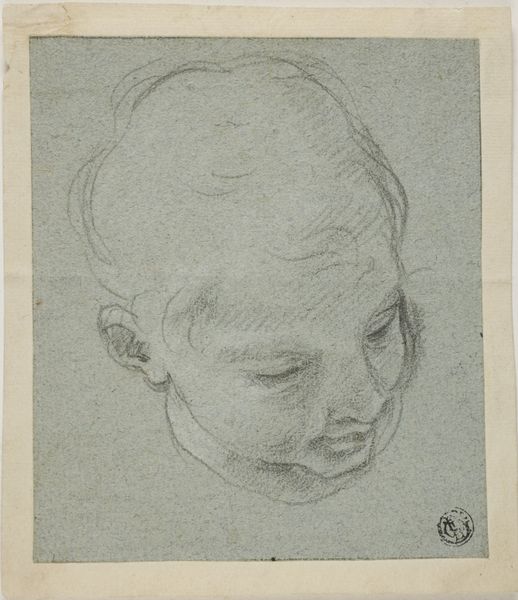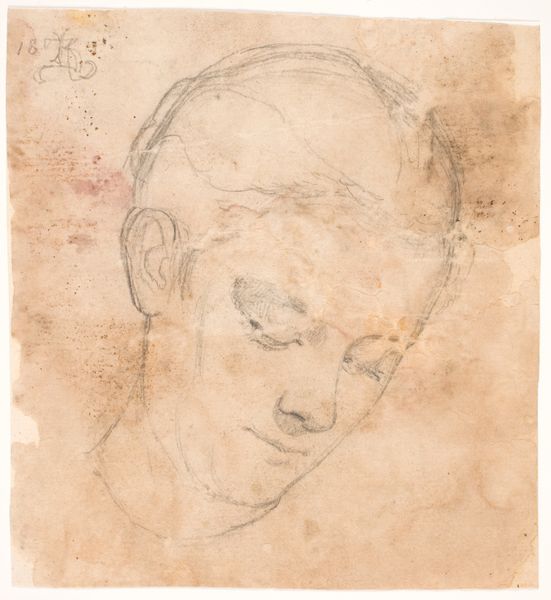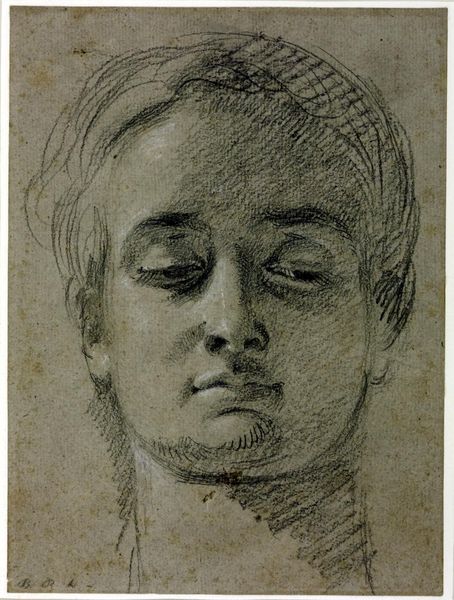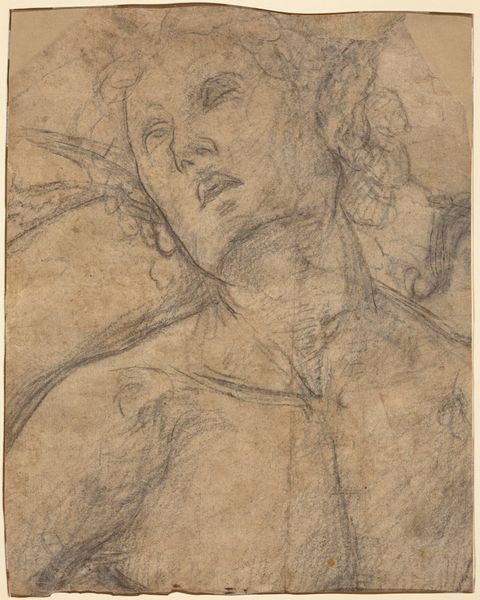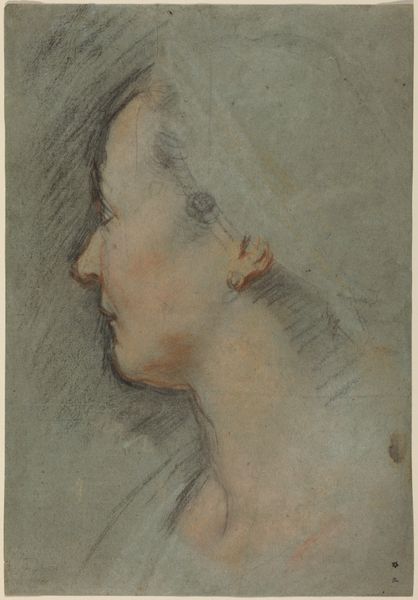
Study of the Head of a Youth Gazing Upward 1471 - 1525
0:00
0:00
drawing, paper, pencil, graphite
#
portrait
#
drawing
#
paper
#
11_renaissance
#
pencil drawing
#
pencil
#
graphite
#
italian-renaissance
Dimensions: 8 7/8 x 5 15/16 in. (22.6 x 15.1 cm)
Copyright: Public Domain
Curator: This graphite drawing on paper is titled "Study of the Head of a Youth Gazing Upward." It is attributed to Pietro Perugino and dates to between 1471 and 1525, placing it firmly within the Italian Renaissance. Editor: The first thing that strikes me is the direction of the gaze and that angle. It’s full of such hope, even vulnerability, and the grid faintly visible beneath suggests it's preparatory. There's a certain incompleteness that enhances the intimate feel. Curator: Indeed. The underdrawing provides insights into the artist’s process and the anatomical precision favored during the Renaissance, it focuses intensely on the planes and structures. Perugino clearly seeks the ideal proportions valued at the time. Editor: And yet, the unfinished nature resists that perfection, in a way. The lines feel fluid, almost searching. Considering its time, I wonder what role preparatory sketches such as this would have played. Was this simply a practice piece, or something more? Curator: Sketches such as these would serve multiple purposes, not merely as practice but for training pupils and preparing for larger-scale paintings. Note, for instance, how Perugino employs hatching and cross-hatching to model form and volume using chiaroscuro techniques. Editor: Right, the shading around the eyes and jaw creates that depth. Thinking about that, in what settings would have an artwork of this kind existed? Were these seen publicly or mainly studied privately in workshops? Curator: Predominantly within the artist’s workshop or perhaps collected by fellow artists or patrons interested in the artistic process itself. Prints hadn’t become widespread yet, and there were fewer formal museums. Access to these types of images was largely limited. Editor: Fascinating! Knowing now what was at stake and its role within artistic circles changes my experience completely. It makes one consider who it was made for and why. Curator: Exactly. Analyzing how it employs line and shade reveals Perugino's grasp of form; investigating its circulation shows how artistic knowledge was produced and valued during the Renaissance. Each perspective offers distinct yet complementary understanding. Editor: Agreed! Thank you. That gives so much food for thought regarding not only how it looks but how it once functioned within its time.
Comments
No comments
Be the first to comment and join the conversation on the ultimate creative platform.
